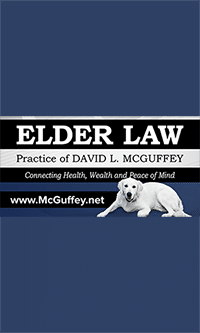POMS SI 01120.010 provides that an individual must have some form of ownership interest in property in order for the property to be considered a resource. [For presumably liquid resources (SI 01110.305), assume that the person whose name is shown as owner owns the entire resource. If more than one owner is shown, assume that each has an equal ownership interest. POMS SI 01140.030; the exception is checking and savings accounts]. The fact that an individual has access to property, or has a legal right to use it, does not make it a resource if there is no ownership interest (SI 01110.100) [But see POMS SI 01110.520]. Further, an individual must have a legal right to access property. Despite having an ownership interest, property cannot be a resource if the owner lacks the legal ability to access funds for spending or to convert noncash property into cash (SI 01110.100). The fact that an owner does not have physical possession of property does not mean it is not his/her resource, provided the owner still has the legal ability to spend it or convert it to cash. However, see SI 01140.240 if a U.S. Savings Bond is involved. Even with ownership interest and legal ability to access property, a legal restriction against the property’s use for the owner’s own support and maintenance means the property is not his/her resource (SI 01110.100).
20 C.F.R. § 416.1201(a)(1) provides: “If a property right cannot be liquidated, the property will not be considered a resource of the individual (or spouse).” In that regard, POMS SI 01120.010 provides when there is a legal bar to sale of property (e.g., if a co-owner legally blocks sale of jointly-owned property), we do not require an individual to undertake litigation in order to accomplish sale or access. The property is not a resource under such circumstances in a month if a legal bar exists as of the first moment of that month. Further, although conservatorship accounts are presumed to be available, that presumption may be rebutted with evidence showing otherwise. Examples of what constitutes evidence of unavailability are in POMS SI 01140.215B.2.
Social Security’s Program Operations Manual System (POMS) describes property ownership at SI 01110.500 as follows:
A. Introduction
Ownership interests in property, whether real or personal, can occur in various types and forms. Since the type and form of ownership may affect the value of property and even its status as a resource, they are significant in determining resources eligibility.
B. Description — Types Of Ownership
1. SOLE VS. SHARED OWNERSHIP
An individual may have sole ownership of a property or may share its ownership with others. See SI 01110.510.
2. FEE SIMPLE OWNERSHIP
Fee simple ownership, which relates only to real property, is completely free of conditions imposed by others. See SI 01110.515 A.1. [See O.C.G.A. § 44-6-20]
3. LESS THAN FEE SIMPLE OWNERSHIP
a. A life estate interest conveys ownership of limited duration. See SI 01110.515 A.2. and B.
b. Equitable ownership can occur when an individual does not have legal title to property. See SI 01110.515 A.2.b. and C. [The table at POMS SI 01140.120 is used to value a life estate]
4. PROPERTY RIGHTS WITHOUT OWNERSHIP
a. A leasehold conveys a time-limited control of property but not ownership of it. See SI 01110.520 B.1.
b. An incorporeal interest in property is a right to use the property but without any right to possess it or sell it. See SI 01110.520 B.2.
C. Operating Policy — Variance In State Laws With Respect To Ownership
The explanations of ownership in the following sections represent general legal principles. However, specific points may vary with State law and issues may have to be reviewed by the Regional Office and/or Regional Counsel.
POMS SI 01140.110 describes other property rights such as mineral rights, timber rights, life estates, etc. Caseworkers are instructed to treat the items in A. above as real property and develop ownership and value per SI 01140.100. The Denver office includes a detailed description of life estates as “an ownership interest in real property. The right of ownership exists for the lifetime of an individual or individuals. Upon the death of the individual(s) the ownership passes to the “remainderman.” The owner(s) of a life estate is called a “life tenant” or “tenant for life.” An individual who merely has the right to use property, e.g., an adult child promises a parent the right to live in a home for the rest of the parent’s life, does not have an ownership interest. One distinguishing factor is that a life estate may be sold or otherwise transferred. Permissive use, however, would not be a legally transferable right, i.e., the parent may not sell the parent’s permissive right to live in the home to a third party.” See SI DEN01140.110; see also SI ATL01110.516. If the life estate holder retains the power to sell the property, its value as a resource is its full equity value. See POMS SI 01140.110.B.4.
With respect to real property, if the individual is making reasonable, but unsuccessful attempts to sell, then the property may be excluded under POMS SI 01130.140. Unsuccessful attempts to sell suggest the value is overstated. POMS SI 01140.044.


